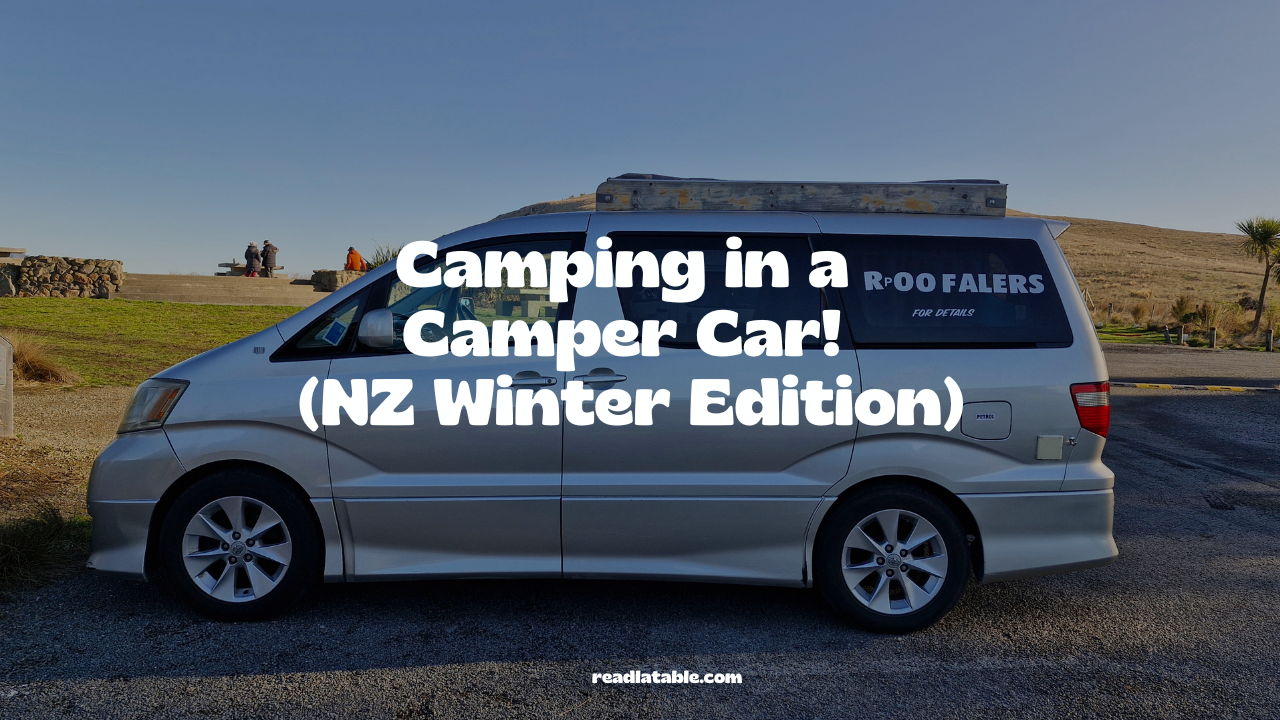We arrived in Christchurch, New Zealand, on 17 June 2024 (almost a year ago last year!) in the dead of winter. After taking a couple of weeks to settle down and scrolling through Facebook Marketplace, we bought our first camper car from an old lady named Fritha.
Fritha was a local ex-journalist and quite the adventurer, especially after she retired. Unfortunately, after going through a hip replacement surgery, she was no longer able to take the camper car out camping. The camper car was a 2003 Toyota Alphard, where the backseat was converted into a fold-down bed, and the back of the car, a kitchenette.
Getting our first camper car in New Zealand
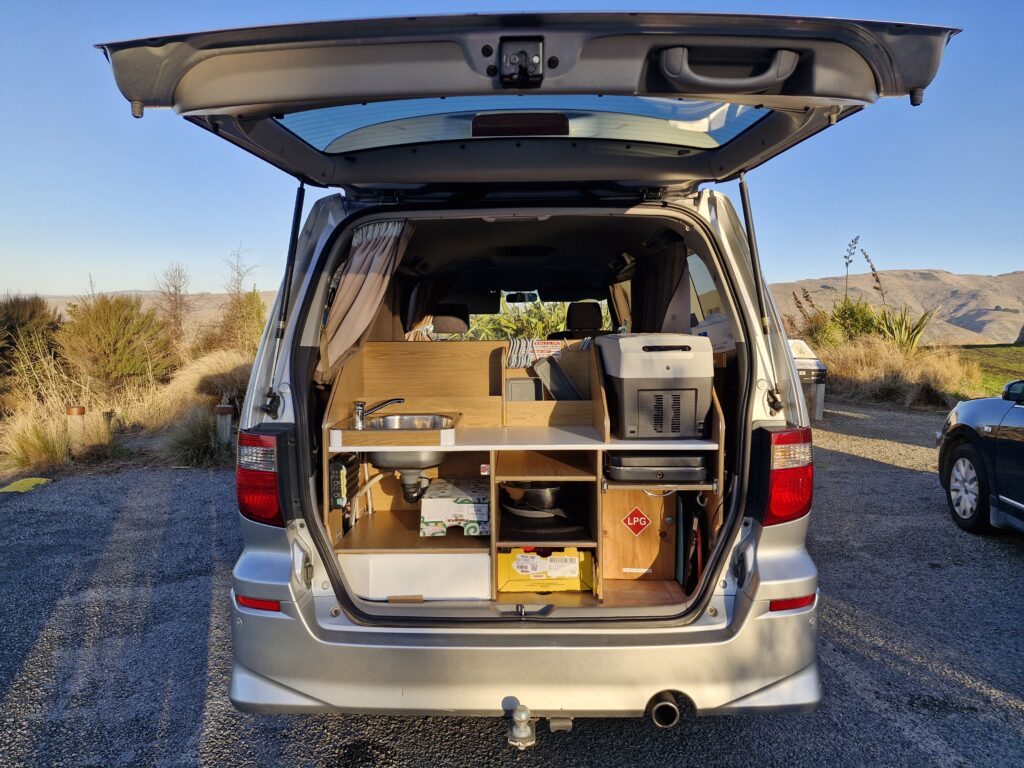
The Toyota Alphard was probably the 5th car that we’ve viewed while in New Zealand. Most backpacker cars tend to be in really bad condition, as most backpackers live out of their cars and are not as particular about cleaning. The Alphard was quite the beauty, and when we saw him for the first time, we knew that that was the car that we wanted.
Our goal at the start of the working holiday was to get a simple camper car that gives both of us enough room, so that we can freedom camp around NZ for a year.
Our requirements were fairly simple: It needed to have at least a blue self-contained certification, it should give us enough power to charge our phones, have a space to cook, and lastly, enough headroom so that we can sit upright in the car. This is important as we will have to spend lots of time inside the car on rainy days.
“Do you have a name for it? (the car)” I asked Fritha.
“No. I named my first car Ladybug. I wanted to call this car ‘Silver Fern, but it didn’t stick,” she said. “Don’t worry, the name will come naturally,” she added.
ROOFALERS
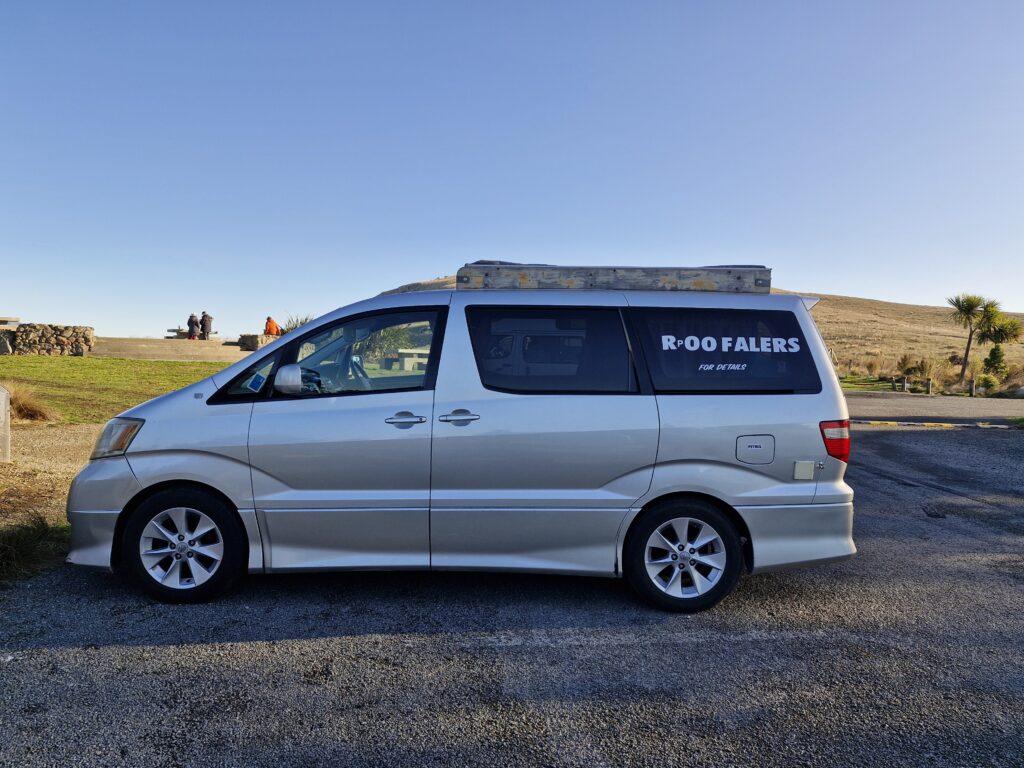
I must admit, we have the UGLIEST name for our Toyota Alphard, but it was the name that stuck. When we got the car, there was a huge ‘FOR SALE’ sticker stuck onto the car, in bright, bold white letters. After a rainy day, a few days after we’d gotten the car, we were happily taking out the “FOR SALE” signage on the car, when Chun and I decided to randomly scramble the letters, ending up with the name Roofalers… Hahaha. It was such an ugly name, but it stuck and I look back so fondly on this memory 1 year on.
Winter Car Camping in New Zealand with Roofalers!
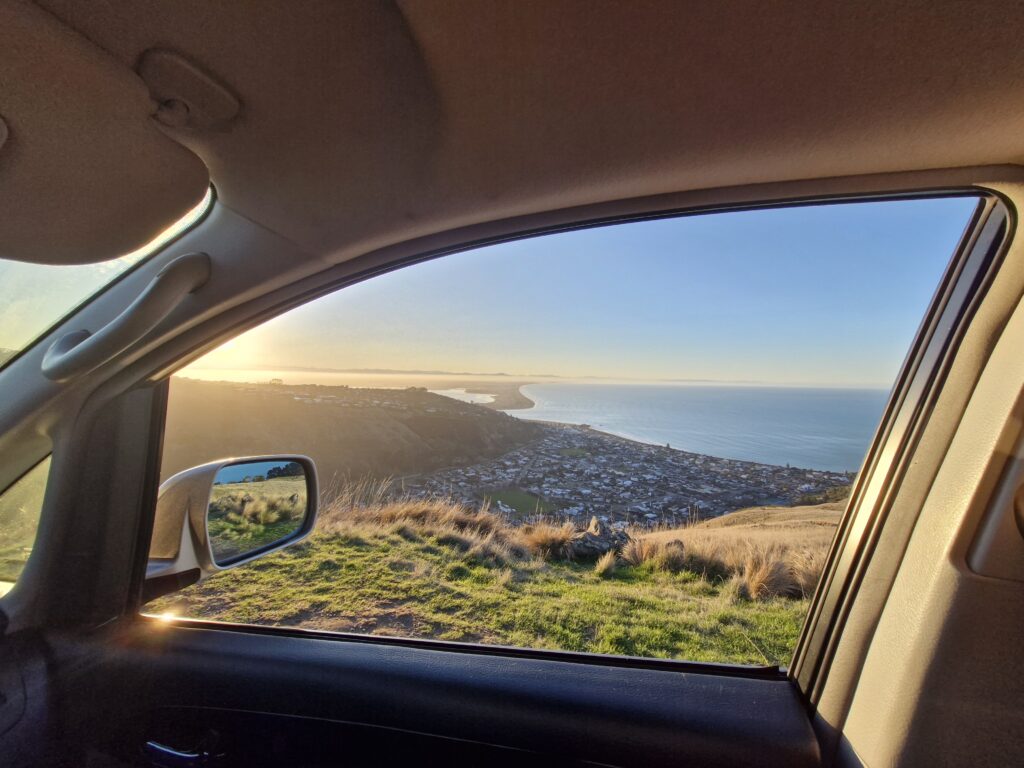
The first night I slept in Roofalers was when our car was parked in front of our Airbnb hosts’ house in Christchurch. It was a freezing -2 degrees out, and we had bought summer blankets. Our host, Angela (who later became a dear friend and our adopted parents in NZ), took pity on us and very generously lent us a thick cotton blanket that was given to her as a wedding dowry gift. That later on saved me from many cold nights 🙂
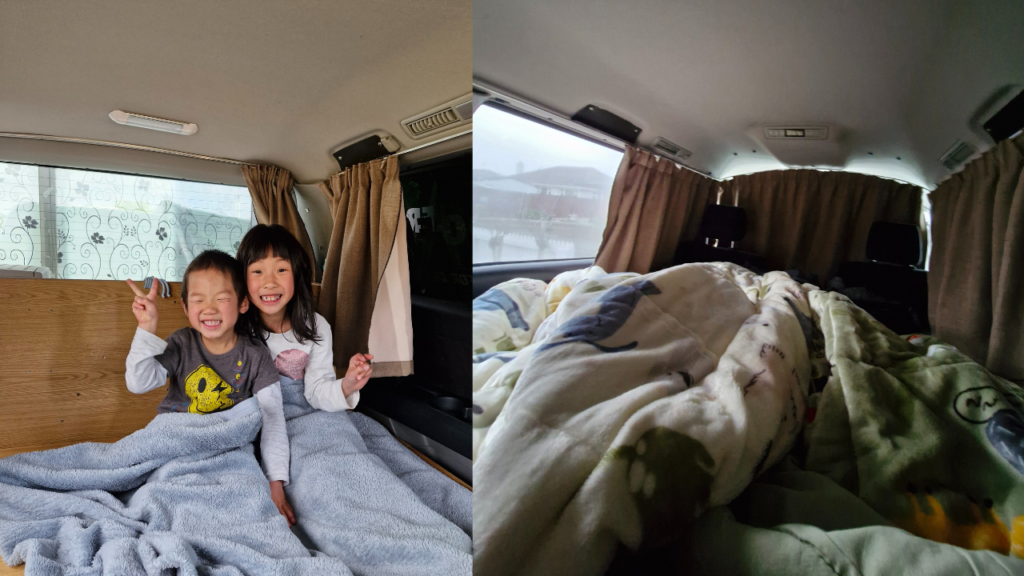
Alice and John, Angela’s kids wanting to play in our camper car as we set it up. I snapped a picture of the 2 cuties.
Our Week-Long Camping Route
Once we got everything packed, we did a week-long camping trip in the following route:
Christchurch > Waipara (Glenmark Reserve Freedom Camp) > Hanmer Springs > Reefton > Greymouth > Otira > Christchurch
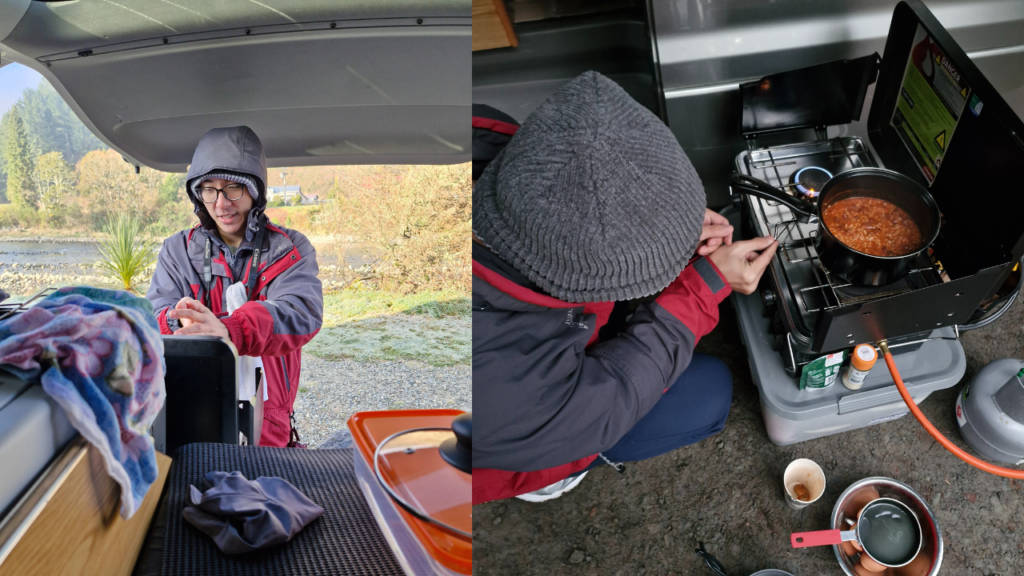
Winter Camping Trip Highlights
Waipara (Glenmark Reserve Campsite)

- The campsite was located near next to a cemetery!
- It was a beautiful, large, open field campsite. We arrived around 2-3 pm and were the first ones there. While we had a nice picnic before dinner, we met a hippie couple who had a dog. Back then, we didn’t know the rules of freedom camping and didn’t know if we could use our gas stove (we could)
- We set up our green awning and tried pan frying chicken. It made the whole awning smell like chicken… hahaha.
- Pretty nice campsite, clean toilets!
- We went for a wine tasting the next day at Torlesse Wines, and we bought a small 20 NZD bottle of sweet port wine. This bottle of wine would later survive a car crash, and we would bring it to drink on special occasions over the next 9 months. We call it the ‘car crash wine’
Hanmer Springs
- The freedom campsite at Hanmer Springs was also great. It was a small space but with clean toilets! When we were there, it was really cold and the floor was icy and everything was frosted
- We went for a small hike around the area (did not go to the springs) and it was the first time I almost slipped on ice
- I remember it was super cold the next morning and the temperature was below 0. Chun and I had to keep the awning, and touching the frozen metal poles to keep the awning was SO PAINFUL.
- Also, the windscreen frosted over, so we had to pour the leftover water from our hot water bottles from the previous night on the windscreen to melt it!
- Thank god for the thick mian hua (cotton) blanket Angela lent us! Did not freeze to death.
Reefton
- Reefton is SUCH a charming small town! One of my favourite towns that we passed by
- The campsite was situated next to a river. The views were beautiful, and the amenities were really good by freedom camping standards! (Clean flush toilets, water points, dump station all in one)
- It was COLD as usual, and we made friends with a couple of older Kiwis who were camping in their motorhomes. The next morning, One of them jokingly said, “I feel bad to say this since it is cold in the car, but I didn’t sleep well in the motorhome last night because it was too hot.”
- I was glad I slept well if not I would be grumpy hearing that! Hahaha.
Greymouth
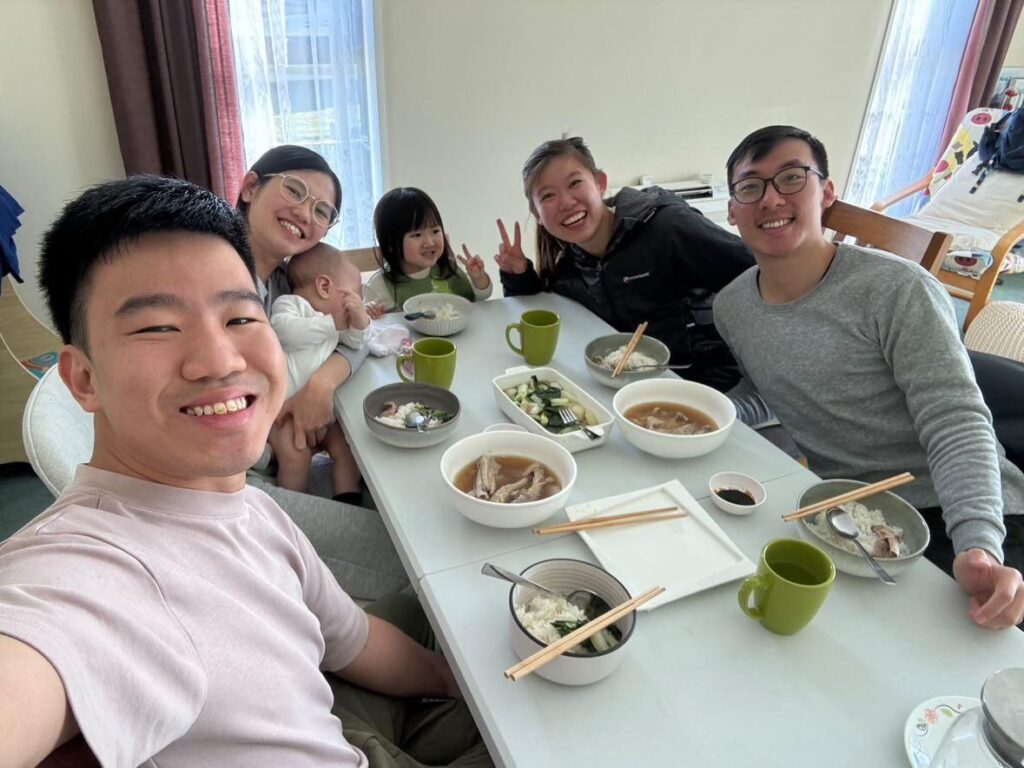
- We met Chiaseed NZ in person for the first time!! Brandon and Jiar Lin cooked us Bak Kut Teh
- Went to get milk from a milk vending machine for the first time!
Otira
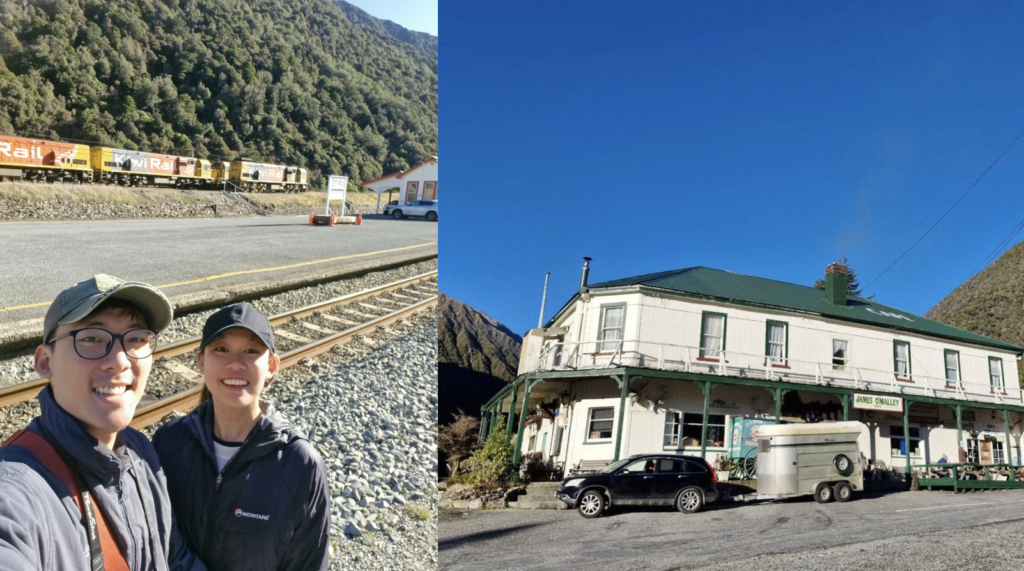
Otira was VERY COOL and it is such a unique place! The town is owned by an old man who loves collecting (and hoarding) antiques and random things. A railway cuts through the town, and this guy owns the hotel and the town surrounding the railway station.
You can find out more about the town by watching this youtube video!
We parked and stayed in the hotel’s car park. When you walk in, the hotel opens to an old-school cafe with a huge, warm fireplace, carpeted floor, antiques, and taxidermy. The people were really nice! We ordered a cheese scone, cooked dinner in the back of our car, sat by the fireplace, played with the jukebox, and called it a night.
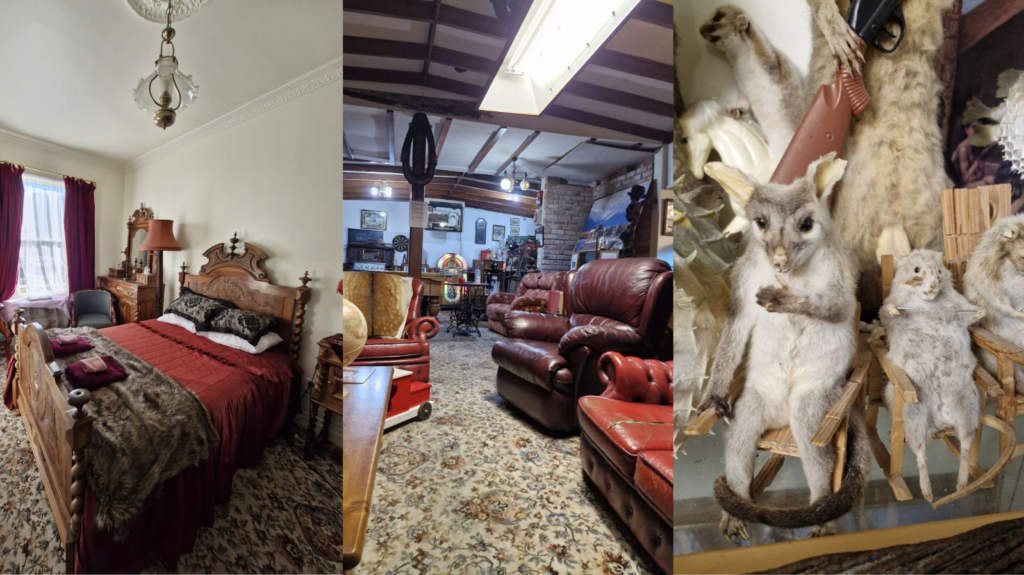
Tips on Camping in a Campercar During Winter in New Zealand
For those looking to try camping in a car during the winter months, here are some quick tips for you:
1. Have warm blankets and hot water bottles
Don’t buy summer blankets for winter like us. Have thick, warm winter blankets and merino wool socks! Place hot water bottles under your blankets to keep warm for the night. Those are really helpful!
2. Take note of having to cook inside/outside your vehicle
Cooking outside in the cold is absolutely demoralising, and you have to deal with strong winds as well!
We tried cooking steak on a cold, windy evening, and the pan barely got warm.
On hindsight, if you are choosing a camper van, having a kitchen that is set up inside the van may be a better option as compared to one that opens out at the boot space. This leaves you susceptible to strong winds and nature’s condition when cooking.
3. Keep your meals simple
As seen from the previous point, cooking is not going to be fun in the cold, so keeping your meals simple to save yourself the hassle 🙂
4. Subscribe to a gym membership, or go to swimming pools for hot showers
If you are freedom camping and not going to paid campsites, the availability of hot showers can be few and far between. Some gyms in New Zealand offers free trials that you can make use of while camping, to get a hot shower and workout in!
Alternatively, I love going to swimming pools for showers and to use their hot pools on a cold winter day! Make sure to go to indoor swimming pools that are heated to get the best bang for your buck.
5. Pack layers
While I wear multiple layers outside (base layer + fleece + windproof jacket), I realise that I only like wearing my pyjamas to sleep (1 layer). When I first camped overnight in my car, I thought wearing more layers would keep me warm while camping. That was very uncomfortable, so I opted for a single comfortable layer instead.
It is important to pack layers as the weather changes, and wear what you find comfortable to sleep.
6. Keep your head warm
An interesting thing that I learnt while camping in winter is that you lose a lot of heat from your head at night when you sleep!
To keep yourself warm, it is useful to wear a beanie to sleep. I don’t find that comfortable, so what I do is to put a jacket over my head and hide underneath it when I go to sleep.
7. Take note of winter sunset/sunrise time
In winter, the sun sets early, at around 4-5pm. This means that if you usually have dinner at 6-7pm, you will be cooking in complete darkness in the campsite.
As such, it is important to plan your camping days according to the amount of daylight hours you have.
While camping, I was having dinner at 4pm and going to bed at 7 pm, right after the sun set. It is also helpful to have something to do in your car while camping to spend the longer night hours!
8. Be mindful of your electrical usage while camping
My camper car has a solar panel that gives us a decent amount of electricity even when the car is turned off.
If you have a camper car, it is useful to take note of your electrical usage (charging phones, laptops, lights etc), and make sure that your camping car set-up allows for that.
It is also important to have adequate lighting in your car so that it is comfortable for you to move around. That said, be mindful not to drain your car battery while using your car electronics as it is on standstill!
I will write more about how to renovate your car or caravan to be self-contained + set up the right electrical and gas supply for your camper car/van/caravan in a separate article.
9. Be careful of black ice!
When driving in winter, make sure that your tyre pressure is not too high. Keep it slightly lower for a better grip on the ground, and avoid driving in shaded areas, or early in the morning to avoid frost and black ice on the ground.
Be careful of light rain when driving on mountain roads, as it is easy for your camper car to slip when the road is slippery!
10. Packing your camper car
Pack your camper car well – ensure that there is proper padding for fragile items (glass bottles, jars, ceramic bowls etc), and that everything is secured / won’t slide around when you are driving. Getting some non-slip mats from Kmart helps!
Camping in a Camper Car in New Zealand
It’s been a long time since I’ve written anything, and this post may not be the most coherent. That said, we had the best time travelling in Roofalers, and I can’t wait to share a few more stories about our adventures with him.
Thank you for reading till the end! I hope you’ve found this article useful.

